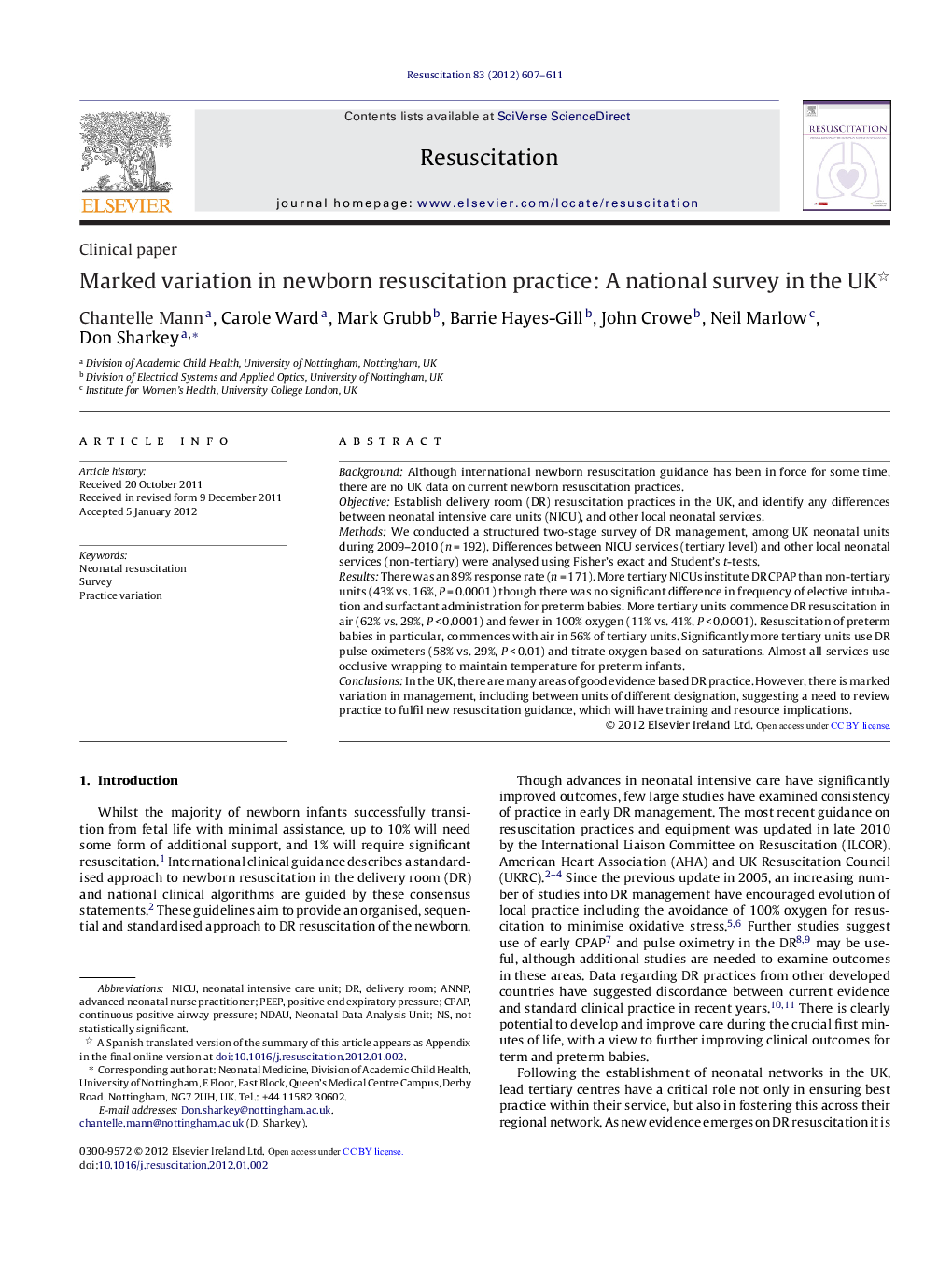| Article ID | Journal | Published Year | Pages | File Type |
|---|---|---|---|---|
| 5999119 | Resuscitation | 2012 | 5 Pages |
BackgroundAlthough international newborn resuscitation guidance has been in force for some time, there are no UK data on current newborn resuscitation practices.ObjectiveEstablish delivery room (DR) resuscitation practices in the UK, and identify any differences between neonatal intensive care units (NICU), and other local neonatal services.MethodsWe conducted a structured two-stage survey of DR management, among UK neonatal units during 2009-2010 (n = 192). Differences between NICU services (tertiary level) and other local neonatal services (non-tertiary) were analysed using Fisher's exact and Student's t-tests.ResultsThere was an 89% response rate (n = 171). More tertiary NICUs institute DR CPAP than non-tertiary units (43% vs. 16%, P = 0.0001) though there was no significant difference in frequency of elective intubation and surfactant administration for preterm babies. More tertiary units commence DR resuscitation in air (62% vs. 29%, P < 0.0001) and fewer in 100% oxygen (11% vs. 41%, P < 0.0001). Resuscitation of preterm babies in particular, commences with air in 56% of tertiary units. Significantly more tertiary units use DR pulse oximeters (58% vs. 29%, P < 0.01) and titrate oxygen based on saturations. Almost all services use occlusive wrapping to maintain temperature for preterm infants.ConclusionsIn the UK, there are many areas of good evidence based DR practice. However, there is marked variation in management, including between units of different designation, suggesting a need to review practice to fulfil new resuscitation guidance, which will have training and resource implications.
